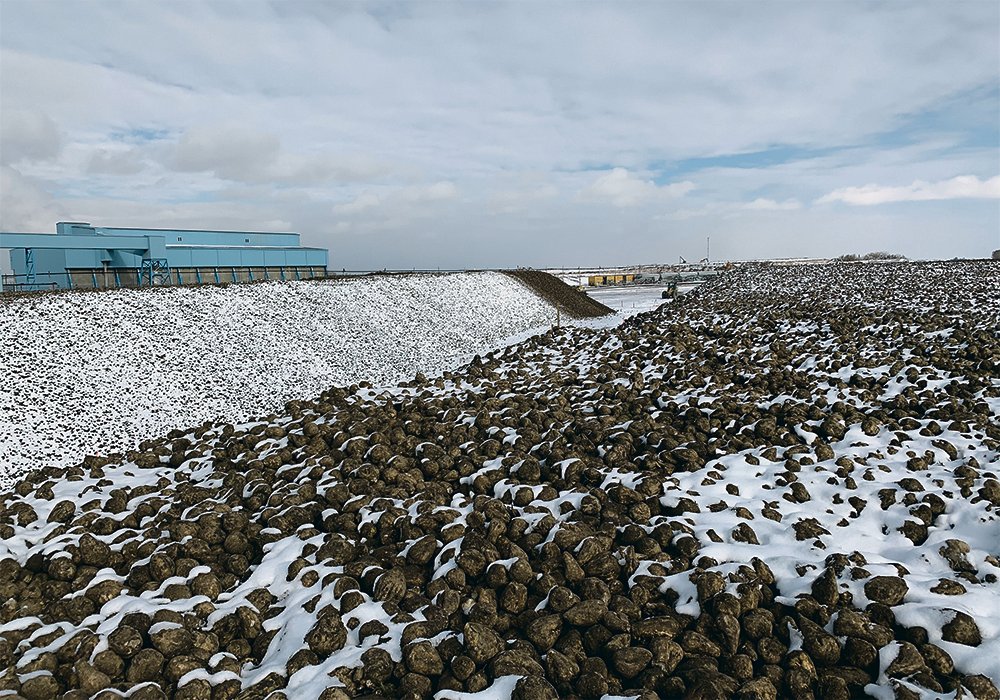Remote sensors may help make it safer to store sugar beets

Alta. researchers hope to develop an aeration system that can automatically respond to temperature changes in the pile during winter
Wireless sensors and automation will play a part in research efforts to reduce sugar beet storage losses in southern Alberta.
Freshly harvested beets are stored outside during winter in piles of up to 50,000 tonnes until they can be processed, said scientist Chandra Singh of Lethbridge College.
If they aren’t sufficiently ventilated, they can be vulnerable to freezing and drying cycles from temperature swings due to extreme weather, damaging the beets and causing them to start to rot and lose sugar, he said.
As part of a $404,733 research project, researchers hope to create an aeration system linked to a remote wireless sensor system to automatically respond to temperatures at the piles.
The three-year research project involves a collaboration between Lethbridge College, the Alberta Sugar Beet Growers (ABSG) and Lantic Inc., with technical support by OPisystems of Calgary.
“Improving the quality of sugar beets while in storage has been a longstanding issue in this industry, one that has cost both the growers and the processor in the past,” ASBG president Gary Tokariuk said in a written statement from Lantic Inc.
“Anything we can do to help better understand the condition of the sugar beets in the pile to mitigate damage will result in more sugar extracted from the beet. This is profitable for both the processor and the grower.”
The Lantic plant in Taber, Alta., is the only facility in Canada that processes sugar beets. Harvested crops must be stored outside in large piles from about mid-September until February while they await their turn, said Singh in an interview.
Although some of the piles are aerated, most are not.
Sugar beets have a maximum storage life of about 220 days, he said. However, if the piles start to rot due to factors such as frost damage, their durability may be shortened in ways that may not be readily detectable without sensors.
Processes such as decomposition, as well as biological respiration from the beets, creates heat that can cause temperatures to rise within the piles, promoting spoilage, said Singh. “And the more responses start to happen inside, the temperature rises faster and it keeps expanding.”
Creating large structures to store sugar beets is too expensive, he said. Technology that monitors external and internal temperatures can potentially provide a more affordable alternative, he added.
A grid of wireless sensors will send data to cloud-based computer servers so users can track the situation remotely from any location.
The data could also be used to make decisions to remotely turn on fans as required to help maintain a uniform target temperature, Singh said in a statement from Lethbridge College. “This process will be completely automated, so you don’t have to have people going out and physically checking the piles.”
Data from the research project will be used to help design the best aeration system, he said in the interview. It will look at factors such as aeration and fan design, along with the configuration of the piles, to find solutions that maximize efficiency.
“Sugar beet farming and processing is a significant contributor to the southern Alberta economy, contributing $32.2 million in farm receipts annually,” Singh said in the statement.
He will lead the project in his role as Applied Research Chair in Agricultural Engineering and Technology at the college’s Centre for Applied Research, Innovation and Entrepreneurship (CARIE).
Singh recently received $236,083 in funding for the project through Alberta Innovates’ Smart Agriculture and Food Digitization and Automation Challenge program.
Nearly half of Alberta’s sugar beet crop was lost in 2019 due to a freeze-and-thaw cycle in the fall. Frost and snow damage caused an “inability to store or process the unharvested damaged sugar beet crop,” said a statement by Rogers Sugar Ltd., which markets sugar under Lantic Inc.
About 16,000 tonnes of sugar beets in a pile in Burdett, Alta., began to rot in 2020 due to frost damage from a severe cold snap in October. The loss only represented about three percent of the total crop delivered that year in Alberta.
Source: producer.com

